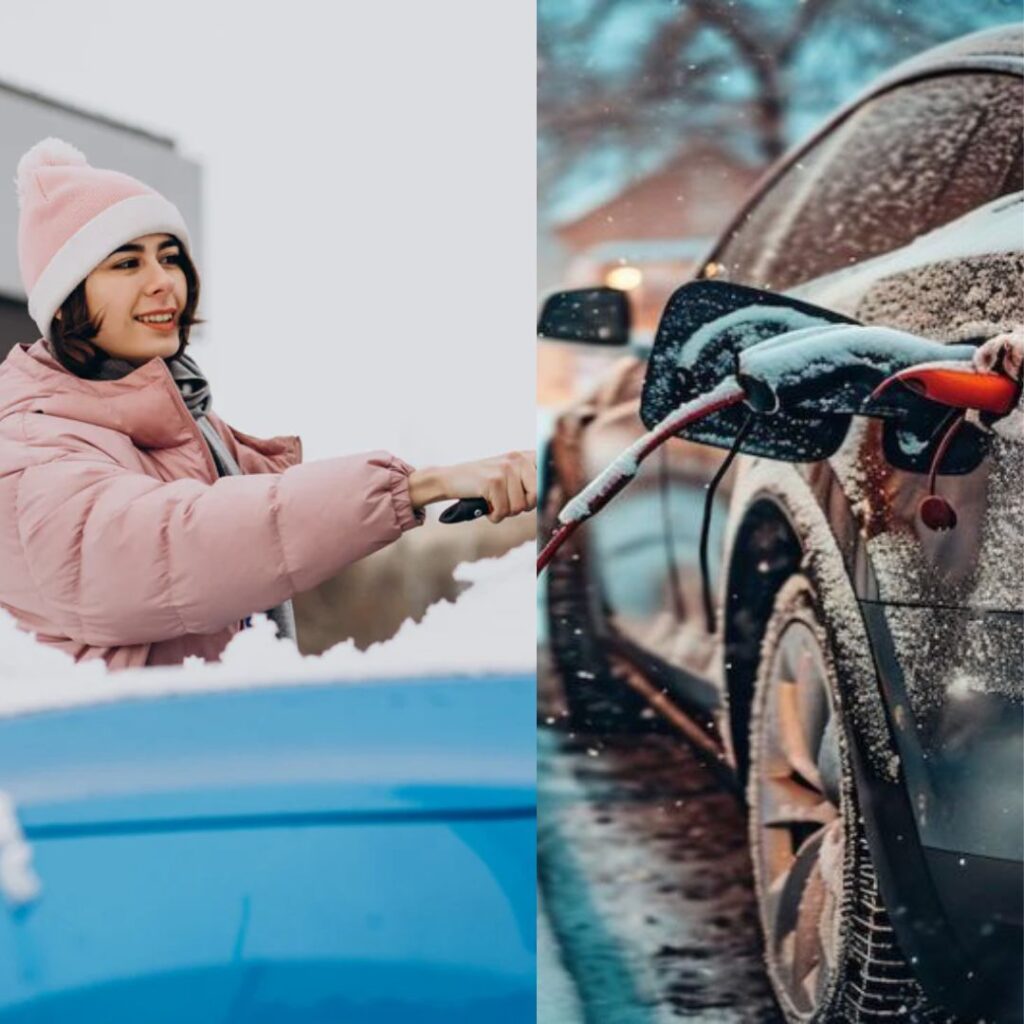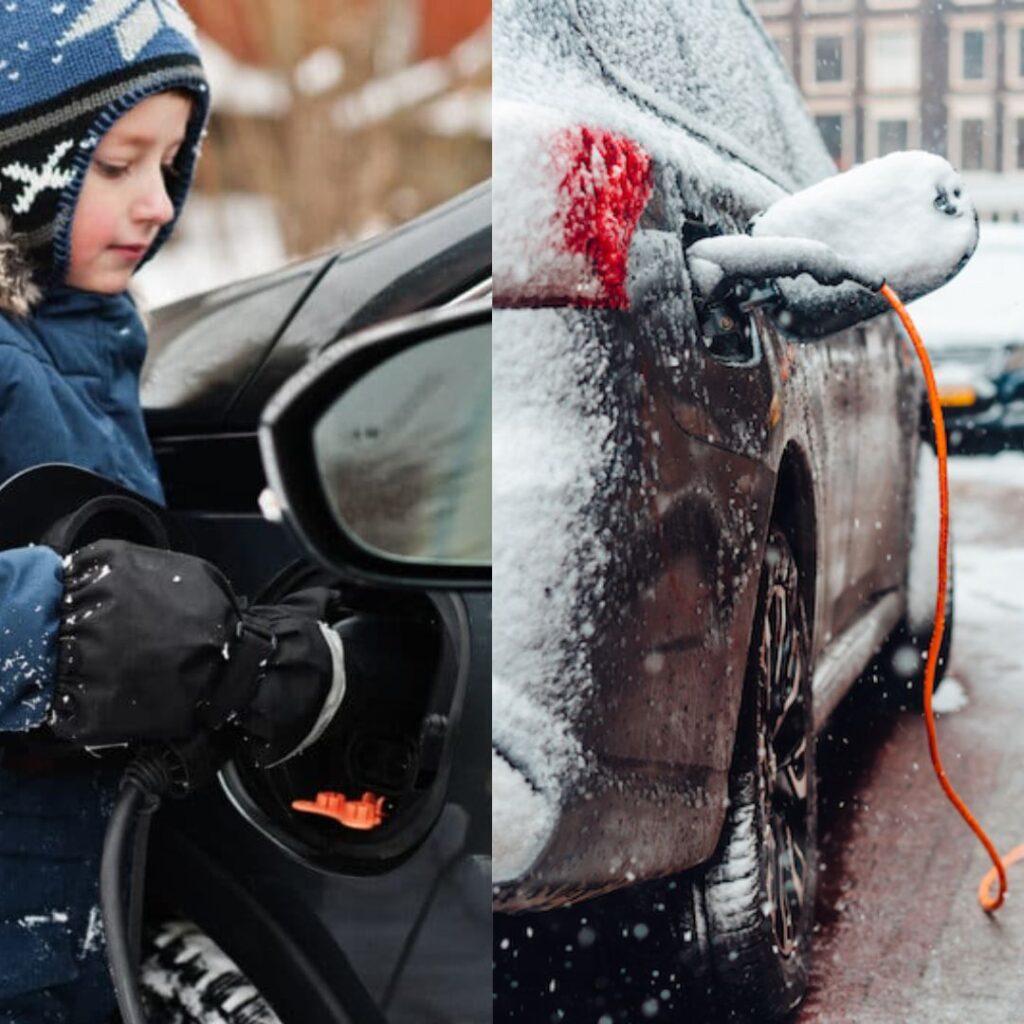Winter poses significant challenges for electric vehicle owners. Cold temperatures affect battery performance and range. Recent tests have shown that EVs face considerable limitations during winter months. Let’s explore these challenges and find practical solutions.
Understanding Winter’s Impact on Electric Vehicles

Electric vehicles rely heavily on their battery systems. Cold weather significantly reduces battery efficiency. Tests show that EVs can lose up to 30% of their range in freezing temperatures. Battery chemistry slows down in cold conditions. This affects both charging and discharging capabilities.
Winter driving demands more energy from EVs. Heating the cabin uses substantial battery power. Snow and ice increase rolling resistance. Cold tires reduce efficiency further. These factors combine to create significant challenges for EV owners.
Major Challenges Electric Cars Face in Winter

The battery performance drops noticeably in cold weather. Chemical reactions within the batteries slow down. This results in reduced power output and slower charging times. Cold weather can cut range by up to 40% in extreme conditions.
Cabin heating becomes a major energy drain. Unlike gas cars, EVs don’t have excess engine heat to warm the interior. They must use battery power for heating. This further reduces the available range for driving.
Charging takes longer in cold weather. Battery cells need to reach optimal temperature for efficient charging. This can add significant time to charging stops. Fast charging may be slower than usual in winter conditions.
Maximizing Your EV’s Winter Performance
Pre-conditioning your vehicle while plugged in saves battery power. Use scheduled departure times to warm the car before unplugging. This helps preserve range for actual driving needs.
Garage parking provides significant benefits. It keeps the battery warmer than outdoor parking. A warmer battery performs better and charges faster. Even an unheated garage helps protect from extreme cold.
Proper tire maintenance becomes crucial in winter. Keep tires properly inflated for optimal efficiency. Consider winter tires for better traction and safety. Good tires help maximize range in challenging conditions.
Winter Charging Strategies
Plan charging stops more frequently in winter. Account for longer charging times in cold weather. Choose charging locations with nearby indoor facilities. This makes waiting more comfortable during longer charging sessions.
Home charging remains the most convenient option. Install a Level 2 charger for faster charging speeds. Schedule charging during off-peak hours for cost savings. Keep the battery level between 20% and 80% for optimal performance.
READ THIS BLOG:Exploring Fleet As A Service Investment Opportunities: A Guide To Maximizing Returns
What are the Tips to Maintain EV in Winter?
Winter maintenance for your electric vehicle starts with simple daily habits. Keep your car in a garage whenever possible to protect the battery from extreme cold. Pre-warm your vehicle while it’s still plugged in to save battery power for driving.
Check your tire pressure weekly since cold weather causes pressure drops. Clean snow and ice off your car’s sensors and cameras to keep safety features working properly. Consider installing a Level 2 home charger to ensure your battery stays topped up during cold spells.
These tips focus on practical actions that make a real difference in winter. Would you like me to add any specific maintenance points or explain any of these in more detail?
Preheat your vehicle
Preheating your electric vehicle while it’s still plugged into the charger helps preserve battery life and ensures a comfortable start to your journey.
Most modern EVs come with smartphone apps that let you schedule preheating, so your car will be warm and ready exactly when you need to leave.
Battery Charging Practices
Keep your EV’s battery level between 20% and 80% during winter months to maintain optimal performance and extend battery life.
Schedule charging during overnight hours when electricity rates are lower, and always use a Level 2 charger at home for faster, more efficient charging in cold weather.
Activate Eco Mode
Using Eco Mode in winter reduces power consumption by limiting acceleration and adjusting climate control settings to help extend your EV’s driving range.
Most electric vehicles automatically optimize battery performance in Eco Mode by reducing energy draw from non-essential systems while maintaining safe operating temperatures.
Tire Maintenance
Check your EV’s tire pressure weekly during winter as cold temperatures can cause significant pressure drops that affect range and safety.
Install high-quality winter tires specifically designed for EVs to improve traction and maintain optimal energy efficiency in snowy or icy conditions.
Latest EV Models and Their Winter Performance

The Tesla Model Y Long Range leads winter performance with only a 10.5% range loss in cold weather, maintaining 272 miles of range compared to its summer range of 304 miles. The BMW i4 eDrive40 follows with impressive cold-weather capability, though it experiences a more noticeable drop from 317 miles to 261 miles in winter conditions.
The Cupra Born 58 kWh shows typical winter range reduction, dropping from 219 miles to 182 miles in cold weather. New EV models are continuously improving their winter performance through advanced battery heating systems and more efficient heat pumps, making cold-weather driving more practical each year.
Frequently Asked Questions
How much range do EVs lose in cold weather?
Most EVs lose between 10-40% of their range in cold weather, depending on temperature and driving conditions.
Can you charge an EV in freezing temperatures?
Yes, but charging times increase significantly. Using pre-conditioning features helps optimize charging speed.
Do all EVs perform equally in winter?
No, models with heat pumps and more efficient battery heating systems perform better in cold weather.
Is it safe to drive an EV in snow?
Yes, EVs are generally safe in snow, often providing good traction due to their heavy battery weight and low center of gravity.
Should I buy an EV if I live in a cold climate?
Yes, but choose a model with features like heat pumps and battery heating systems, and plan for reduced winter range.
Conclusion
While electric cars face significant challenges in winter conditions, they remain practical with proper preparation and management. Understanding range limitations, using pre-conditioning features, and planning ahead makes winter EV ownership manageable. Modern EVs continue to improve their cold-weather performance through advanced heating systems and battery management.
The key to successful winter EV operation lies in proper planning and realistic expectations. While range reduction is inevitable, it shouldn’t make EVs “unusable.” Instead, owners should adapt their driving and charging habits to accommodate winter conditions.





